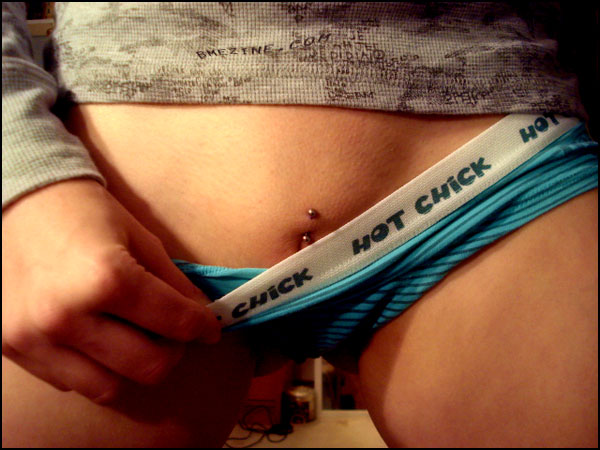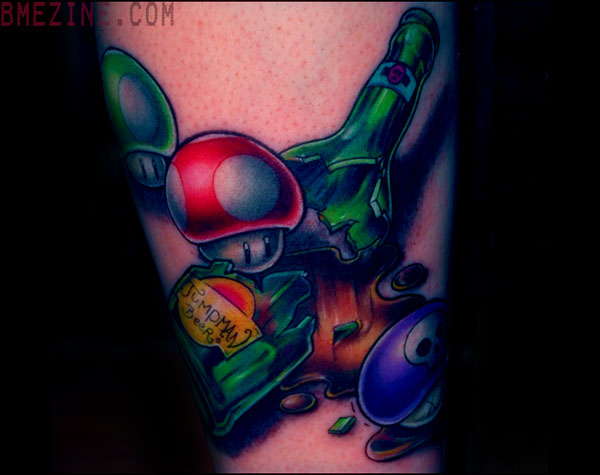(Editor’s note: This article was first published on October 17, 2001, in The Point, the publication of the Association of Professional Piercers. Since part of BME’s mandate is to create as comprehensive and well rounded an archive of body modification as possible, we feel these are important additions.
Paul King, the article’s author, has given BME permission to publish a series of articles he wrote for The Point that explore the anthropological history behind many modern piercings. This is the first in that series.)

Male infibulation involves pulling the foreskin of the penis over the glans and piercing the foreskin through both sides, vertically or horizontally. In theory, this type of foreskin piercing secures the prepuce like a hood over the glans, making arousal painful and erection impossible. The procedure was usually performed with needle followed by thread until healed, at which point a ring or fibula pin would be directly inserted. (Sometimes, the “jewelry” would be inserted immediately after or as part of the piercing process.)
Ironically, in recent times the male foreskin piercing is usually performed to enhance aesthetics and pleasure. Most modern piercers find that typical foreskin piercings heal more quickly and with fewer complications when using barbells instead of rings.
Clear records of male infibulation can be found from twelfth century B.C.E. through fourth century C.E., then again from the seventeenth century C.E. until present. The practice seems to have fallen out of vogue for about 1,300 years in between; scanning western literature during that period, no references to the practice have been found. Then, in the latter part of 1715, Onania was published in London, and set into motion the journey of masturbation into the dark ages; this was “Patient Zero” in all religious rhetoric on the evils of “self-pollution.” The pamphlet (and the doctoral essays in the following generations that quoted from it) set the misconceptions that masturbation was injurious and evil and had to be stopped by whatever means — including piercing. The author remains anonymous.

Remember: The Arabs, Greeks and Romans were not prudes. They infibulated not for fear of sin, but out of superstition and control. They believed young singers’ voices could be kept pure and unchanged, that athletes and gladiators performed better chaste and, of course, slaves’ sex members needed to be controlled for breeding, protection from STDs, and the safety of non-slave women.
It seems that the resurgence of infibulation was most widely practiced in Germany around the end of the eighteenth century. Doctors Campe and Vogel felt piercing the flesh of the foreskin and, once healed, installing an iron ring was appropriate for “difficult cases.” Keep in mind, that these operations were performed non-consensually on children.
A few scientific heretics first appeared around 1875. They thought the evils of masturbation were exaggerated and that the medical operations were barbaric and ultimately ineffective. There were those whose rhetoric clung to the past, such as Freud and the Catholic Church. Then, however, the final nail was hammered in with the Kinsey Report of 1948, showing 92 percent of the population masturbated, thus closing the door on recorded incidences of medical infibulation in the western world. It is known that piercing continued in the SM (sado-masochistic) underground but, since SM was still considered a mental illness and illegal, records remain illusive.
As a footnote, it would seem logical that the “Prince Albert” was first practiced as a form of infibulation on circumcised men, however a clear cut example, describing the practice or of the use of the name Prince Albert, has not been traced prior to The Art of Pierced Penises and Decorative Tattoos by Doug Malloy. So far, American books on the history of circumcision (where the operation is widely practiced) have yielded no concrete references. Exploration of LGBT archives and the Leather Archives in Chicago — a museum dedicated to the Leather and SM communities — should be under taken for possible references prior to the 1970s. The smoking gun is out there — it just hasn’t been found.

A General Time Line
Twelfth century B.C.E.: Per Mensius, infibulation was at least in practice to the time of the siege of Troy. Chastity Safeguards by Anonymous.
Up to fourth century C.E.: Fragmented accounts given in the second century and after by Celsus and Oribasius, giving descriptions of the reasons and operation. Male Infibulation by Dingwall M.A.
Seventeenth century: Surgeon, Dionis, describes the “bouclement de garcons” (the male ring) piercing chastity during the reign of Louis XIV, written beginning of eighteenth century. Male Infibulation by Dingwall M.A.
Eighteenth century: Doctors such as Campe, Jaeger and Vogel support infibulation as a means to stop masturbation. Male Infibulation by Dingwall M.A.
1822: A detailed account of Dr. Marx’s encounter with a patient who had been infibulated several times appears in the Gazette de Sante.
1876-1892: Dr. Yellowees declared that he performed infibulation operations by passing metal safety pins through the foreskin. Masturbation, The History of a Great Terror by Jean Stengers and Anne Van Neck.
1910: “Self pollution: When everything else fails, we have no hesitation in recommending surgical treatment. This is of various kinds, from repeated blistering to that ancient operation which Latin writers tell was practiced upon singers of the Roman stage, called infibulation.” Know Thyself: Nature’s Secrets Revealed by Bishop Fallows and Dr. Truitt.
1926: Regarding prevention of masturbation: “Other physicians perforate the foreskin and introduce a ring.” The Sexual Life of Our Time by I. Bloch, M.D.
My usual disclaimer: I am not an anthropologist. From time to time, there will be errors. Please be understanding and forth coming if you have information you would like to share.
Please consider buying a membership to BME so we can continue bringing you articles like this one.
![]()











